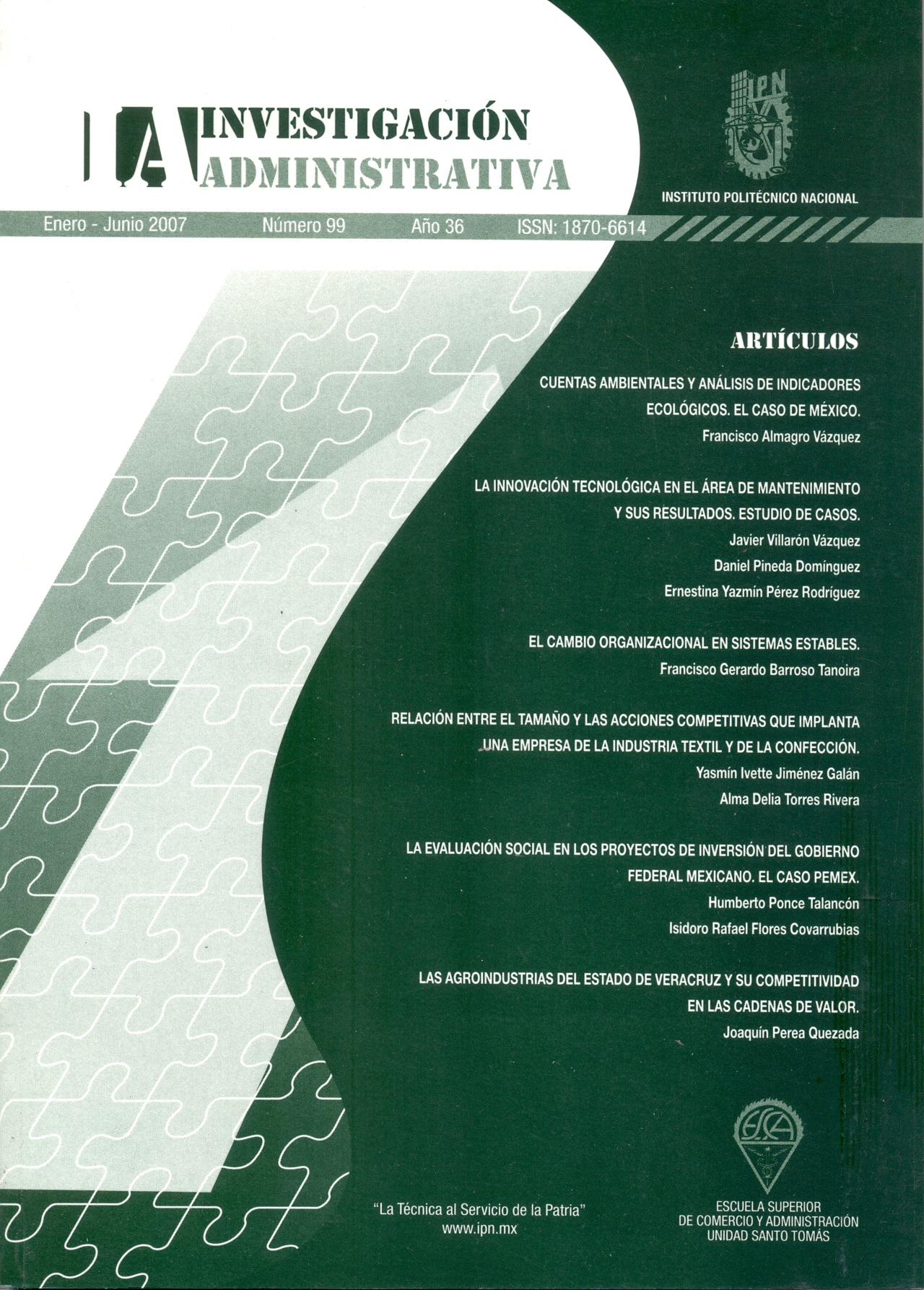RELATIONSHIP BETWEEN SIZE AND COMPETITIVE ACTIONS IMPLEMENTED BY A COMPANY IN THE TEXTILE AND CLOTHING INDUSTRY
Main Article Content
Abstract
Since the subscription of free trade, mexican enterprises in the textile and confection industry have faced a rise in industry rivalry. This situation produced a decrease in their competitiveness. In this context, the objective of this investigation was to determine the relationship between the size of a textile and confection enterprise and the competitive actions that implements. The model of “competitors rivalry” which points that “it is more probable that small enterprises carry out competitive actions due to their flexibility” (Hitt, M. et. al: 2004) was used as methodological instrument for this investigation. A study case was applied to Bruno, a small enterprise of the textile and confection industry who struggle with the competition of Chinese products. This small enterprise, trying to stay in business, has implemented a number of competitive actions with little or none success in creating competitive advantages.
The results show that Bruno's way of administration has hinded the company to take advantage of the strength that experts grant to small enterprises: flexibility and agility in the decision making process.
Article Details

This work is licensed under a Creative Commons Attribution-NonCommercial 4.0 International License.
References
Daft, R. (2005). Teoría y diseño organizacional (5a. ed.). México: Internacional Thompson.
Dey, I. (1999). Grounding grounded theory Estados unidos de norteamerica: academic press
Hitt, M., Ireland, D., R., Hoskisson, R. (2004). Administración estratégica. Competitividad y conceptos de globalización (5a. ed.). México: Thompson.
Instituto Nacional de estadística, geografía e informática. (1995). La industria textil y del vestido en México. México: Autor.
Instituto Nacional de estadística, geografía e informática. (2004). La industria textil y del vestido en México. México: Autor.
§Méndez, J. (1996). Economía y la empresa. México: Prentice Hall.
Mercado, S. (1993). Estrategias empresariales frente al tratado de libre comercio en Norteamérica. México: CECSA.
Porter, M. (1980). Ventaja competitiva, creación y sostenimiento de un desempeño superior. México: Diana.
Porter, M. (1999). Ser competitivo, nuevas aportaciones y conclusiones. Bilbao: Gedisha.
Prahalad, C.K., Hamel, G.(1990). The core competencies of a corporation. Harvard Business Review.
Remenyi, D., Williams, B., Money, A., Swartz, E. (1998). Research in business and management. An introduccion to process and method. Londres: Sage Publications Inc.
Situación actual de la industria textil y de la confección (PDF) Secretaría de economía, 2004.
Sipper, Daniel.; Bulfin, Robert. (1998) Planeación y control de la producción. México: Mc Graw Hill.
Yin, R. (1984). Case study research Desing and Methods. Beverly Hills, California: Sage Publications.
Kurt Salomón Asociates (2003) Estudio diagnóstico de la cadena fibras – textil – vestido [Documento www] Recuperado el 28 de Septiembre del 2004 de, http://www.economia.gob.mx.
Datos monográficos de la cámara nacional de la industria del vestido. La industria del vestido. Recuperado en agosto del 2004 de, http://www.cniv.org.mx.
Situación actual del sector textil y confección. [Documento www]. Recuperado en julio del 2004 de, http://www.bancomext.com.

